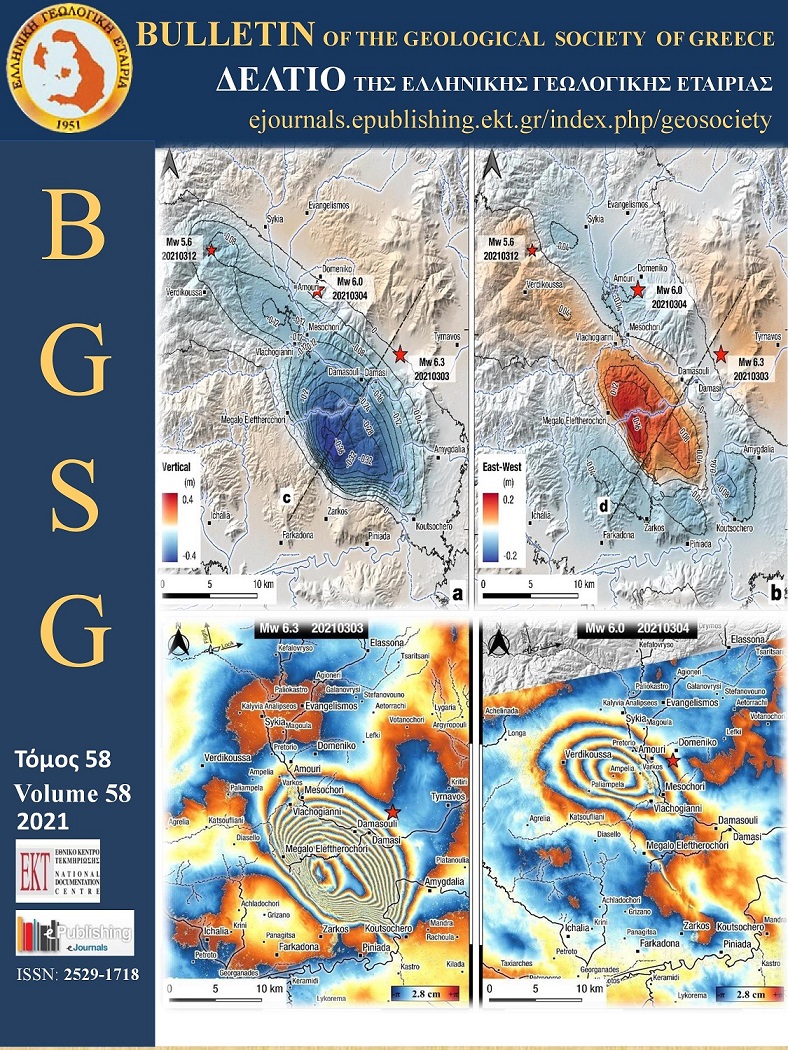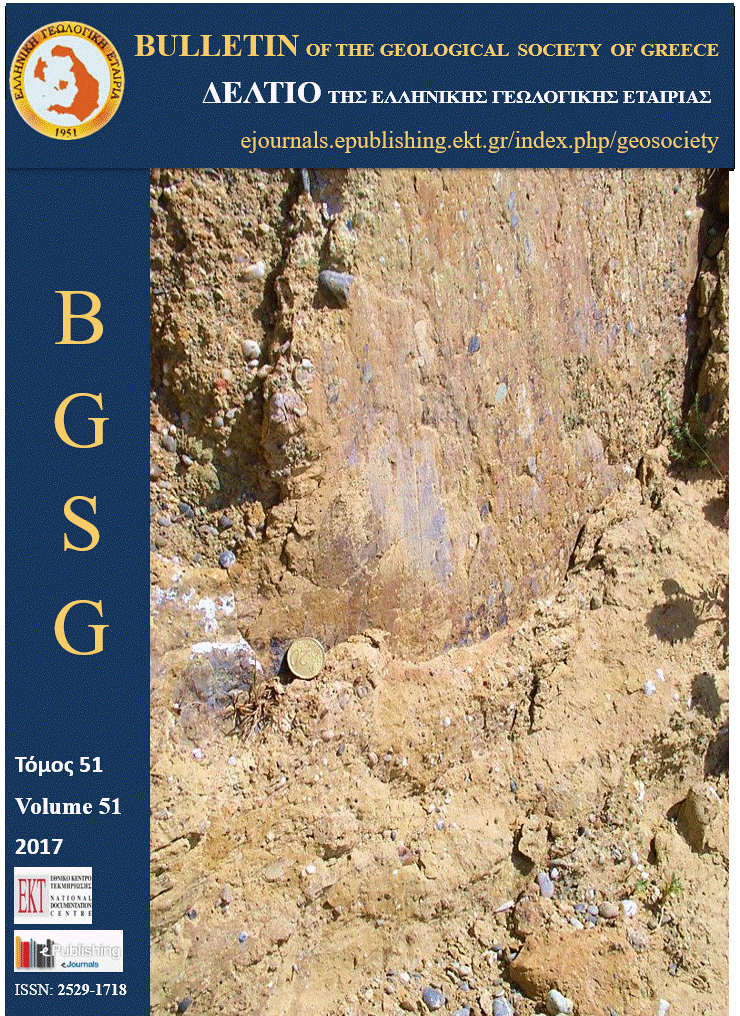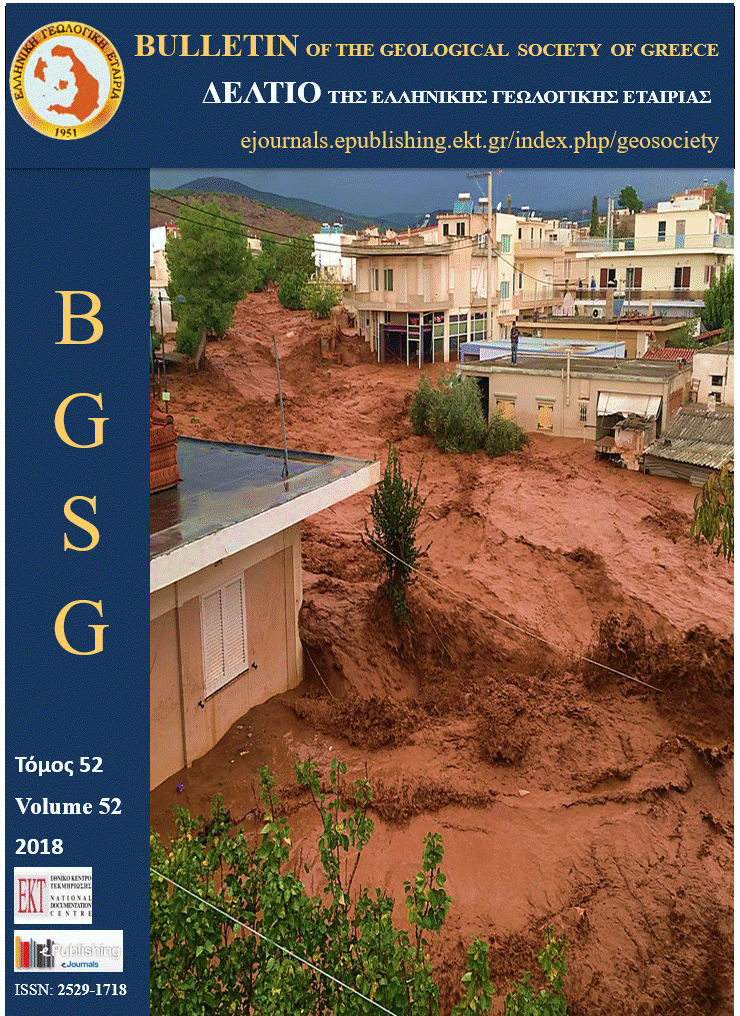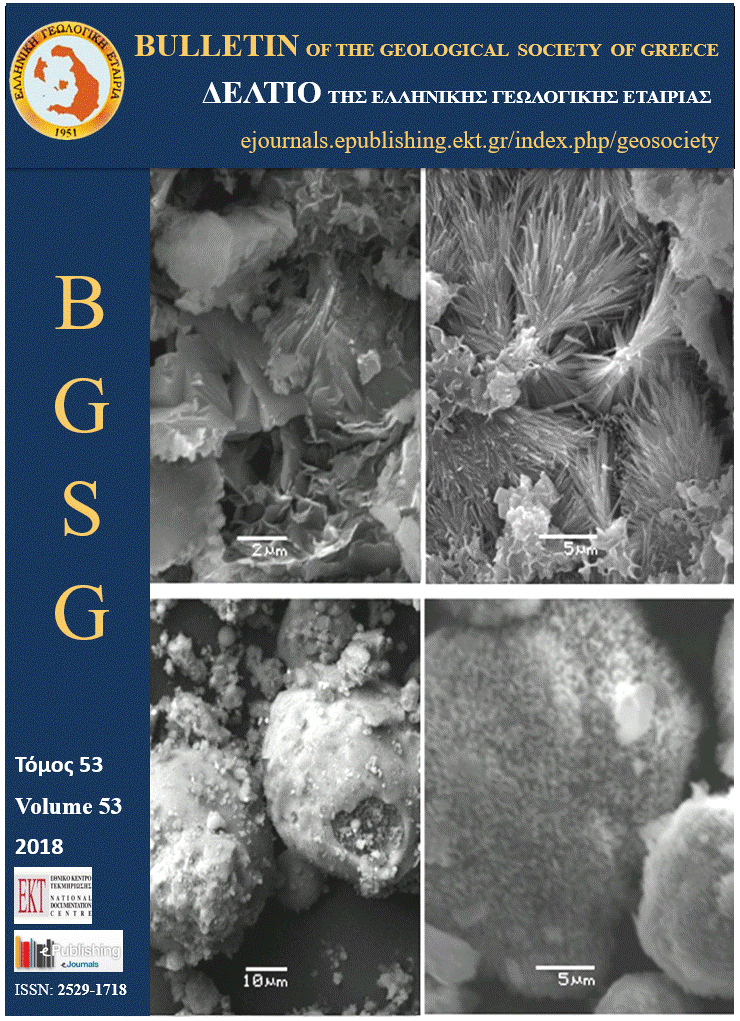Investigating the capability of Sentinel-2 and Worldview-3 VNIR satellite data to detect mineralized zones at an igneous intrusion in the Koutala islet (Lavreotiki, Greece) using laboratory mineralogical analysis, reflectance spectroscopy and spectral indices
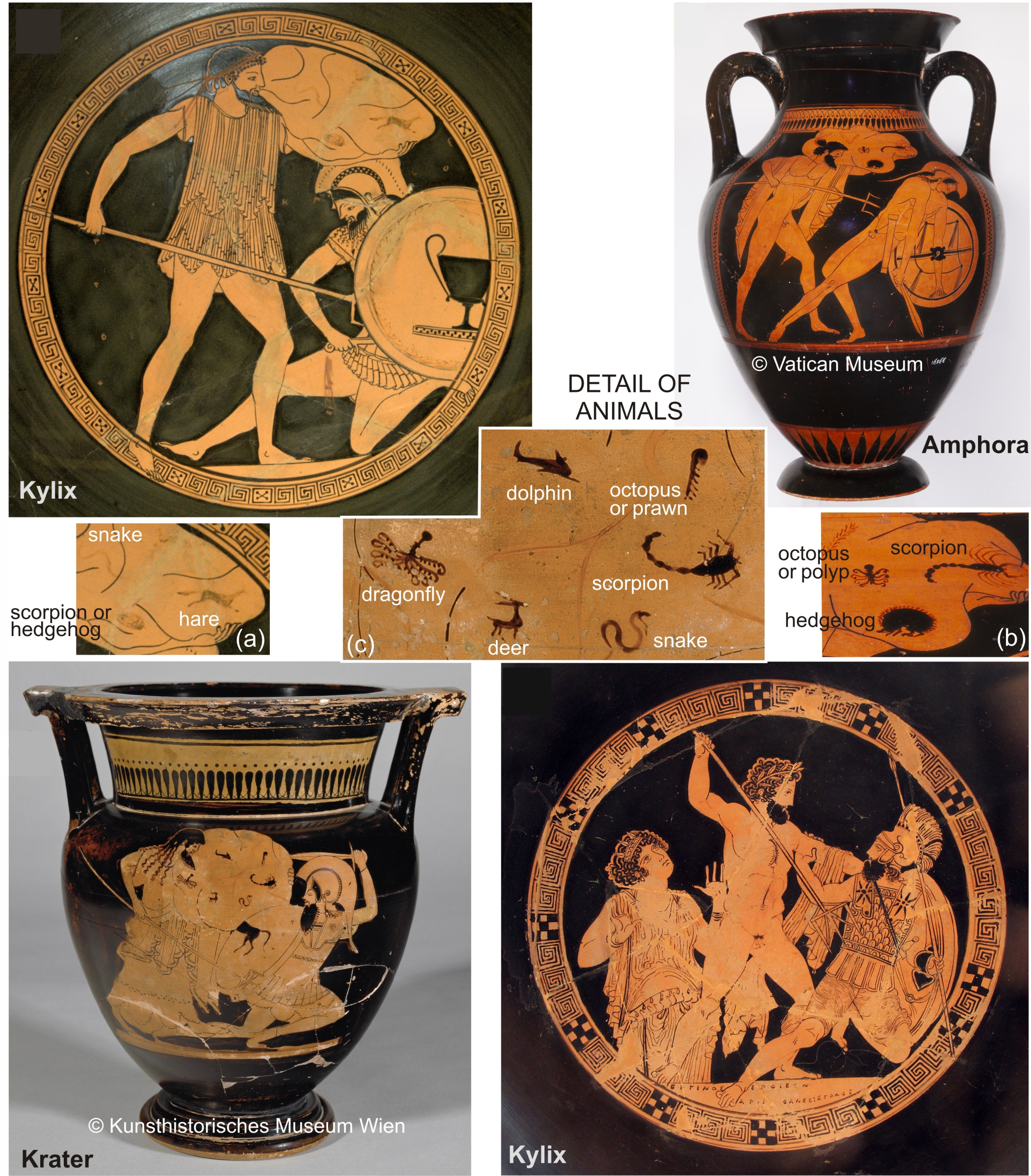
Abstract
During the last decades, the rapid progress of remote sensing data processing for their utilization in detecting locations of possible sites linked to hydrothermal alteration and ores has gained increasing attention due to significant time and cost savings. In this study, we present the findings of a joint remote sensing and laboratory examination of a mineralization zone induced by a granitoid intrusion onshore the islet of “Koutala”, in Lavreotiki, central Greece. Our objective is to investigate the potential of Sentinel-2 and WorldView-3 VNIR satellite data to detect and map oxidized ore zones and alteration minerals that are detected from laboratory analysis of samples and could be linked to Fe-Mn mineralization. Two approaches are followed, namely reflectance spectroscopy and spectral indices. In reflectance spectroscopy, the spectral signatures of all minerals detected in the study area are retrieved from spectral libraries. The signatures are resampled to Sentinel-2 and to WorldView-3 VNIR spectral bands. Continuum-removal is then applied and the diagnostic absorption features of each mineral are detected for each spectral band configuration. The dataset with the best spectral configuration for mineral detection is then used for the production of mineral maps using the corresponding satellite image. The second approach involves the calculation of spectral indices, namely ferric, ferrous iron and hydroxyl-bearing alteration, on reflectance spectra. The ferric iron index is applied to both satellite datasets while the two other indices require the use of SWIR bands and therefore, they can be only calculated on Sentinel-2 data. All results show that laboratory and satellite data analyses results are consistent and complementary. WorldView-3 VNIR data seem to be sensitive only to the ferric and manganese phase. Sentinel-2 data seem to be capable to detect and map all alteration minerals that are potentially linked to Fe-Mn ore, including both ferric and ferrous phases. The mineral absorption and spectral indices maps show that in the investigated area, there is significant mineralization related to the granitoid intrusion. Hydrothermal alteration is observed on the entire surface of the islet but it seems to be stronger at the eastern part of the islet where the granitoid/schist contact is located. It is the first time that (i) minerals linked to a potential Fe-Mn ore are detected on the islet and (b) the corresponding alteration mineral maps are produced from satellite data, revealing their spatial distribution and providing indirect estimations of the degree of their presence.
Article Details
- How to Cite
-
Sykioti, O., Ganas, A., Vasilatos, C., & Kypritidou, Z. (2023). Investigating the capability of Sentinel-2 and Worldview-3 VNIR satellite data to detect mineralized zones at an igneous intrusion in the Koutala islet (Lavreotiki, Greece) using laboratory mineralogical analysis, reflectance spectroscopy and spectral indices. Bulletin of the Geological Society of Greece, 59(1), 175–213. https://doi.org/10.12681/bgsg.31982
- Issue
- Vol. 59 No. 1 (2022)
- Section
- Remote Sensing

This work is licensed under a Creative Commons Attribution-NonCommercial 4.0 International License.
Authors who publish with this journal agree to the following terms:
Authors retain copyright and grant the journal right of first publication with the work simultaneously licensed under a Creative Commons Attribution Non-Commercial License that allows others to share the work with an acknowledgement of the work's authorship and initial publication in this journal.
Authors are able to enter into separate, additional contractual arrangements for the non-exclusive distribution of the journal's published version of the work (e.g. post it to an institutional repository or publish it in a book), with an acknowledgement of its initial publication in this journal. Authors are permitted and encouraged to post their work online (preferably in institutional repositories or on their website) prior to and during the submission process, as it can lead to productive exchanges, as well as earlier and greater citation of published work.



